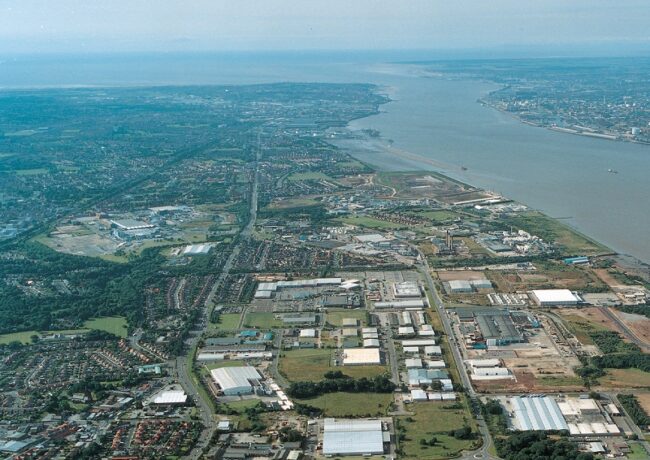Peel shelves plans for river electricity generator
Proposals for a £3.5bn Mersey Tidal Power project aimed at generating enough electricity from the river estuary for over 200,000 homes have been put on hold.
A feasibility study led jointly by a consulting team comprising Scott Wilson, Drivers Jonas and EDF, on behalf of Peel Energy and the North West Development Agency, was carried out on proposals for a barrage across the River Mersey, between New Ferry in Wirral and Dingle in Liverpool.
The scheme was designed so that the turbines within the barrage would generate power in two ways, from ebb tides only as well as from ebb and flood tides, and from a range of water level differences across the barrage.
Peel said the choice of scheme allowed for flexible, managed operations that would minimise effects on the Mersey's protected intertidal habitats.
Peel said multiple navigation locks would need to be included to accommodate large commercial ships and small leisure craft. Other facilities that could be included in the scheme included a visitor centre, a pedestrian and cycle path, a light public transport link and a tidal turbine research centre.
However, Peel said studies have found that the estimated £3.5bn upfront construction costs result in a cost of electricity that is not competitive in the current energy and capital markets.
Anthony Hatton, Peel Energy's development director, said: "In the longer term, once the upfront capital costs have been paid off and for the rest of its 120 year life, the cost of electricity would be very competitive. But the preferred scheme is unlikely to attract the necessary investment while the emphasis in the financial sector and renewable energy incentives is on technologies that provide short to medium term returns. We need to identify an appropriate funding structure that recognises the long term low cost of electricity, security of supply and wider economic benefits that investments such as this provide for future generations."
Peel Energy said it will not be progressing the development work until it has confidence in the financial and regulatory framework for tidal power.
Hatton added: "We are grateful for all the valuable contributions made by many organisations and individuals to the feasibility study. We welcome feedback on the reports and look forward to progressing the project in the future."
Mark Atherton, head of energy and environment at the NWDA, said: "The feasibility work has provided a valuable insight into how tidal energy schemes could be operated in the future to deliver wider economic impact, whilst minimising the potential environmental impact. Some of the lessons learnt from the work undertaken are applicable not just to the Mersey Estuary, but to other estuaries in the North West and UK."





Dissapointing that funding could not be found! Greece is getting 3x more, to pay off Junes intrest on its loans.
…I supose when the design is reviewed again in 50 years, we can always increase the barrage height to assit with rising water levels.
By LM